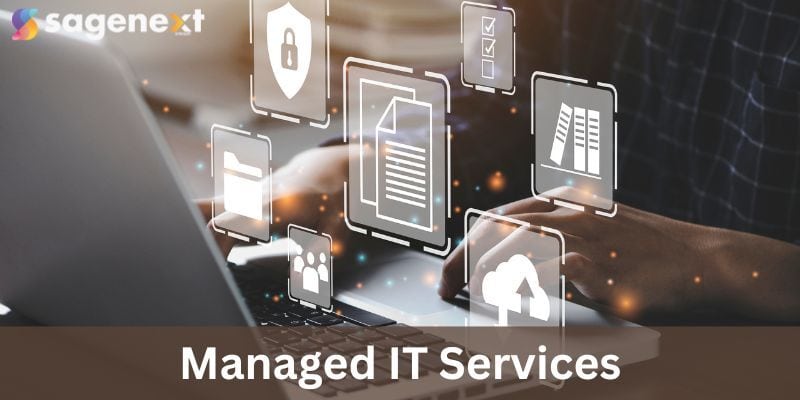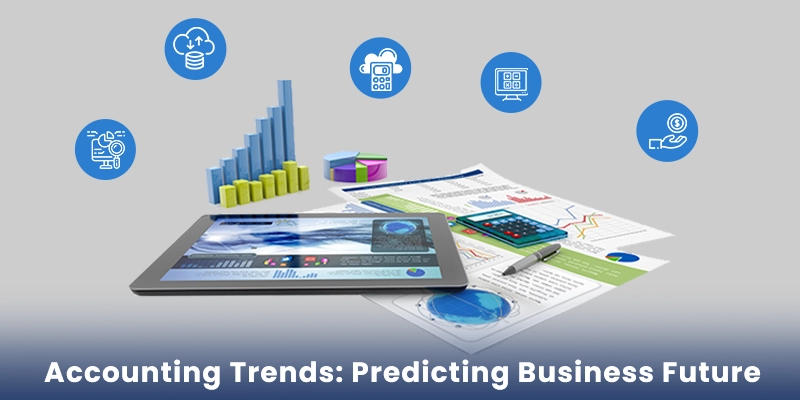
Benefits of Managed IT Services For Small Businesses in 2025
Managed IT services for small businesses offer comprehensive IT solutions and support tailored to the unique needs and budget constraints of small enterprises. These services are designed to outsource the management and maintenance of IT infrastructure, allowing small businesses to focus on their core operations without worrying about technical issues.
At its core, managed IT services encompass a range of offerings, including proactive monitoring, network management, cybersecurity, cloud computing, data backup and recovery, and help desk support. A dedicated team of IT professionals oversees the day-to-day management and maintenance of the business’s IT systems, ensuring they remain secure, efficient, and up-to-date.
Benefits of Managed IT Services for Small Businesses
Managed IT services can be a lifesaver for small businesses, addressing many of their common pain points. Here’s how:
1. Limited IT resources and expertise
Small businesses often can’t afford a full-time IT staff. Managed service providers offer a team of experts who can handle everything from network management to cybersecurity, freeing up your in-house staff to focus on core business activities.
Example: A small retail store might struggle to keep its point-of-sale systems up-to-date and secure. An MSP can handle system updates, and security patches, and monitor for any suspicious activity.
2. Cybersecurity threats
Small businesses are prime targets for cyberattacks. Managed service providers offer robust security solutions like firewalls, intrusion detection, and data encryption to keep your data safe.
Example: A local restaurant chain could be devastated by a ransomware attack that encrypts their customer data. An MSP can implement a backup and recovery plan to ensure they can quickly restore their data in case of an attack.
3. Keeping IT infrastructure up-to-date
Technology is constantly evolving, and keeping your hardware and software up-to-date can be a challenge. Managed service providers proactively monitor your systems and ensure they are updated with the latest security patches and software versions.
Example: A dentist’s office might not have the expertise to identify and address vulnerabilities in their practice management software. An MSP can identify these vulnerabilities and ensure timely updates are applied.
4. Unexpected IT costs
Small businesses can be hit hard by unexpected IT emergencies like hardware failures or data breaches. Managed service providers offer predictable monthly fees, eliminating the worry of surprise IT bills.
Example: An accounting firm might experience a costly downtime due to a server crash. An MSP can implement a disaster recovery plan to minimize downtime and associated costs.
5. Focus on core business activities
By outsourcing IT management, small business owners and employees can dedicate their time and energy to their core competencies, like sales, marketing, or customer service.
Example: A bakery owner can spend more time perfecting their recipes and providing excellent customer service by not having to worry about IT issues.
What is the Best IT Solution for a Small Business?
When selecting IT solutions, several factors must be considered. Understanding your business requirements is crucial, as it helps in identifying which areas can benefit most from IT interventions. Additionally, scalability, flexibility, integration capabilities, user-friendliness, and evolving capabilities are key factors to evaluate. By carefully assessing these aspects, you can ensure that the chosen IT solution aligns with your business goals, adapts to your evolving needs, and empowers your team to maximize its potential.
A. Importance of Choosing the Right IT Solution
1. Streamlined Operations and Productivity
Selecting the right IT solution can transform your business. Imagine having tools that automate repetitive tasks, manage data efficiently, and keep your team connected.
2. Cost-Effectiveness
Investing in the right IT solution saves your money in the long run. Imagine avoiding costly downtime due to system failures or security breaches. Plus, efficient software means less time wasted – and time is money!
3. Competitive Edge
In today’s fast-paced business world, staying ahead matters. The right IT solution can give you an edge – whether it’s through better customer service, faster response times, or smarter data analysis.
B. Factors to Consider When Choosing IT Solutions for Small Businesses
1. Understanding Your Requirements
Before diving in, evaluate your business needs. Which areas can benefit most from IT solutions? Is it project management, accounting, marketing, or customer support? Knowing this helps you narrow down your options.
2. Scalability and Flexibility
Think long-term. As your business grows, your IT needs will too. Look for solutions that can scale seamlessly. Also, flexibility matters – find software that adapts to your unique processes.
3. Integration Capabilities
Efficient data flow is key. Check how well the solution integrates with your existing systems (like CRM or marketing tools). Smooth integration reduces manual work and boosts efficiency.
4. User-Friendliness and Ease of Adoption
Your team needs to embrace the solution. A user-friendly interface ensures smooth adoption. After all, even the coolest tech won’t help if nobody knows how to use it!
5. Evolving Capabilities
Tech evolves, and so should your solutions. Choose tools that can keep up with changing business needs. It’s like having a software crystal ball!
What is the Difference Between IT Services and Managed Services?
IT Services
IT services encompass a broad range of offerings related to information technology. These services involve the use of computers, networks, software, hardware, and cloud resources.
- IT Consulting: Providing strategic advice and guidance on IT strategy, planning, implementation, or optimization.
- IT Support: Offering technical assistance and troubleshooting for issues like hardware failures, software errors, or network problems.
- IT Security: Ensuring protection against cyber threats such as malware, ransomware, phishing, and data breaches.
- IT Training: Educating users on IT skills, tools, and best practices.
Managed Services (MSPs)
Managed services involve outsourcing the management and maintenance of IT systems and functions to a third-party provider. These providers take full responsibility for their clients’ IT operations.
- Managed Network: Handling design, installation, configuration, performance, and security of network infrastructure (e.g., routers, switches, firewalls).
- Managed Cloud: Managing migration, deployment, integration, optimization, and security of cloud services (e.g., cloud computing, storage, applications).
- Managed Backup: Ensuring secure data backup and recovery in case of disasters or loss.
- Managed Security: Providing threat detection, prevention, response, and remediation.
| Features | IT Services | Managed Services |
| Targeted support for specific tasks or issues. | Primarily reactive, addressing issues as they arise. | Proactive, focusing on preventing potential problems and optimizing performance. |
| Scope of Coverage | Targeted support for specific tasks or issues | Comprehensive coverage, managing the entire IT landscape. |
| Strategic Partnership: | Transactional, providing assistance on a per-need basis. | Collaborative, forming a strategic partnership with continuous improvement in mind. |
How Do I Choose a Managed IT Service?
Choosing the right managed IT service provider (MSP) is crucial for keeping your business operations running smoothly. Here’s a breakdown of key factors to consider when making your decision
1. Assess Your Business Needs
Assess Your Business Needs: Evaluate your existing IT infrastructure (including hardware, software, and network) and consider its complexity. Identify your top security concerns, such as data protection and threat detection. Determine a realistic budget for managed IT services. Additionally, think about how your IT needs might evolve as your business grows
2. Research and Compare Potential Providers
When researching and comparing potential IT service providers, prioritize factors such as experience and expertise by seeking an MSP with a proven track record and industry-specific knowledge. Ensure the provider offers the precise services you require, such as security, network management, and data backup. Scalability is essential, so opt for a provider capable of adapting and growing with your evolving IT needs. Assess customer reviews and references to gauge the provider’s reputation and client satisfaction. Lastly, prioritize communication and transparency by selecting a provider committed to clear communication and keeping you informed about your IT infrastructure’s health.
3. The Selection Process:
During the selection process, start by shortlisting MSPs that align well with your needs and budget. Then, send out Requests for Proposals (RFPs) outlining your specific requirements and gather proposals from the selected providers. Schedule meetings with each provider to delve deeper into their approach, pricing structure, and address any lingering questions you may have. Prioritize security and compliance by ensuring the selected provider places a high emphasis on data security and adheres to relevant industry compliance standards.
4. Make Your Decision
When making your decision, carefully compare the proposals, pricing plans, and features offered by each shortlisted MSP to determine the best fit for your business. While cost is a crucial factor, prioritize the overall value proposition and long-term benefits over just the upfront cost. Additionally, consider the trustworthiness and comfort level with each provider, as it’s essential to establish a long-term working relationship with a provider you feel comfortable and confident in collaborating with.
Conclusion
Managed IT services for small businesses are essential for streamlining operations, enhancing productivity, and gaining a competitive edge in nowadays. By outsourcing IT management and maintenance to experienced providers, small businesses can benefit from proactive monitoring, enhanced security, and cost-effective solutions. When choosing the right IT solution, it’s crucial to understand your business needs, consider scalability and flexibility, assess integration capabilities, prioritize user-friendliness, and ensure evolving capabilities.
FAQ’s
How much should I charge for managed services?
The cost of managed it services can vary based on factors like the size of your business, the complexity of your IT needs, and the level of support required. Generally, managed service providers offer subscription-based pricing models
What is the difference between internal IT and managed service provider?
Internal IT refers to having an in-house team of IT professionals who are employed directly by your company to manage and maintain your IT infrastructure. On the other hand, a managed service provider (MSP) is an external company that offers IT services and support on a subscription basis.






